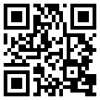Transcranial direct current stimulation for Obsessive-Compulsive Disorder: patient selection and perspectives
- PMID: 31571882
- PMCID: PMC6754675
- DOI: 10.2147/NDT.S184839
Transcranial direct current stimulation for Obsessive-Compulsive Disorder: patient selection and perspectives
Abstract
Transcranial direct current stimulation (tDCS) is a non-invasive neuromodulation technique that has been increasingly examined as an alternative treatment modality for Obsessive-Compulsive Disorder (OCD), due to its low costs, ease of use, and portability. Previous studies have suggested that tDCS may achieve a reasonably good response and present a safe tolerability profile. However, at this point there is not strong evidence for the use of this modality of treatment. Considering that OCD is very heterogeneous with regard to clinical presentation, clinical severity and comorbidities, we have conducted a systematic review of studies on tDCS for OCD aiming to evaluate the clinical characteristics of the selected patients and to discuss perspectives for future studies. A literature search was conducted from inception until March 2019 at PubMed/MedLine and Scielo using the following keywords: "tdcs" or "transcranial direct current stimulation" and "obsessive compulsive disorder". Out of 45 manuscripts, twelve were included. Most of the included studies are uncontrolled. A few controlled studies reported improvement of OCD, but some limitations need to be considered. Our main findings were that the selected patients were adults with severe OCD and psychiatric comorbidities, medicated at the time of assessment and resistant to at least one previous conventional treatment. We could not find any studies including specific populations such as adolescents, elderly, pregnant and breastfeeding participants. Similarly, the potential use of tDCS has not been tested in patients with less severe OCD, as a first treatment option, or for those who do not tolerate pharmacological treatments. These opportunities should be explored in future controlled trials.
Keywords: neuromodulation; obsessive-compulsive disorder; transcranial direct current stimulation.
© 2019 da Silva et al.
Conflict of interest statement
The authors report no conflicts of interest in this work.
Figures
Similar articles
-
Feasibility and acceptability of transcranial stimulation in obsessive-compulsive symptoms (FEATSOCS): study protocol for a randomised controlled trial of transcranial direct current stimulation (tDCS) in obsessive-compulsive disorder (OCD).Pilot Feasibility Stud. 2021 Dec 6;7(1):213. doi: 10.1186/s40814-021-00945-6. Pilot Feasibility Stud. 2021. PMID: 34872621 Free PMC article.
-
Efficacy of pre-supplementary motor area transcranial direct current stimulation for treatment resistant obsessive compulsive disorder: A randomized, double blinded, sham controlled trial.Brain Stimul. 2019 Jul-Aug;12(4):922-929. doi: 10.1016/j.brs.2019.02.005. Epub 2019 Feb 13. Brain Stimul. 2019. PMID: 30808612 Clinical Trial.
-
Transcranial direct current stimulation in obsessive-compulsive disorder: an update in electric field modeling and investigations for optimal electrode montage.Expert Rev Neurother. 2019 Oct;19(10):1025-1035. doi: 10.1080/14737175.2019.1637257. Epub 2019 Jul 8. Expert Rev Neurother. 2019. PMID: 31244347 Review.
-
Transcranial direct current stimulation in treatment-resistant obsessive-compulsive disorder: An open-label pilot study.Prog Neuropsychopharmacol Biol Psychiatry. 2016 Feb 4;65:153-7. doi: 10.1016/j.pnpbp.2015.10.001. Epub 2015 Oct 9. Prog Neuropsychopharmacol Biol Psychiatry. 2016. PMID: 26439873
-
Brain Stimulation in Obsessive-Compulsive Disorder (OCD): A Systematic Review.Curr Neuropharmacol. 2019;17(8):787-807. doi: 10.2174/1570159X17666190409142555. Curr Neuropharmacol. 2019. PMID: 30963971 Free PMC article.
Cited by
-
Clinical advances in obsessive-compulsive disorder: a position statement by the International College of Obsessive-Compulsive Spectrum Disorders.Int Clin Psychopharmacol. 2020 Jul;35(4):173-193. doi: 10.1097/YIC.0000000000000314. Int Clin Psychopharmacol. 2020. PMID: 32433254 Free PMC article. Review.
-
Therapeutic Neurostimulation in Obsessive-Compulsive and Related Disorders: A Systematic Review.Brain Sci. 2021 Jul 19;11(7):948. doi: 10.3390/brainsci11070948. Brain Sci. 2021. PMID: 34356182 Free PMC article. Review.
-
Efficacy and safety of transcranial direct current stimulation as an add-on treatment for obsessive-compulsive disorder: a randomized, sham-controlled trial.Neuropsychopharmacology. 2021 Apr;46(5):1028-1034. doi: 10.1038/s41386-020-00928-w. Epub 2021 Jan 15. Neuropsychopharmacology. 2021. PMID: 33452434 Free PMC article. Clinical Trial.
-
Feasibility and acceptability of transcranial stimulation in obsessive-compulsive symptoms (FEATSOCS): study protocol for a randomised controlled trial of transcranial direct current stimulation (tDCS) in obsessive-compulsive disorder (OCD).Pilot Feasibility Stud. 2021 Dec 6;7(1):213. doi: 10.1186/s40814-021-00945-6. Pilot Feasibility Stud. 2021. PMID: 34872621 Free PMC article.
References
-
- American Psychiatric Association. DSM-5 Task Force. Diagnostic and Statistical Manual of Mental Disorders: DSM-5. Washington, DC: American Psychiatric Association; 2013.
LinkOut - more resources
Full Text Sources



